Going faster by stopping: How did F1 pitstops get so blisteringly quick?
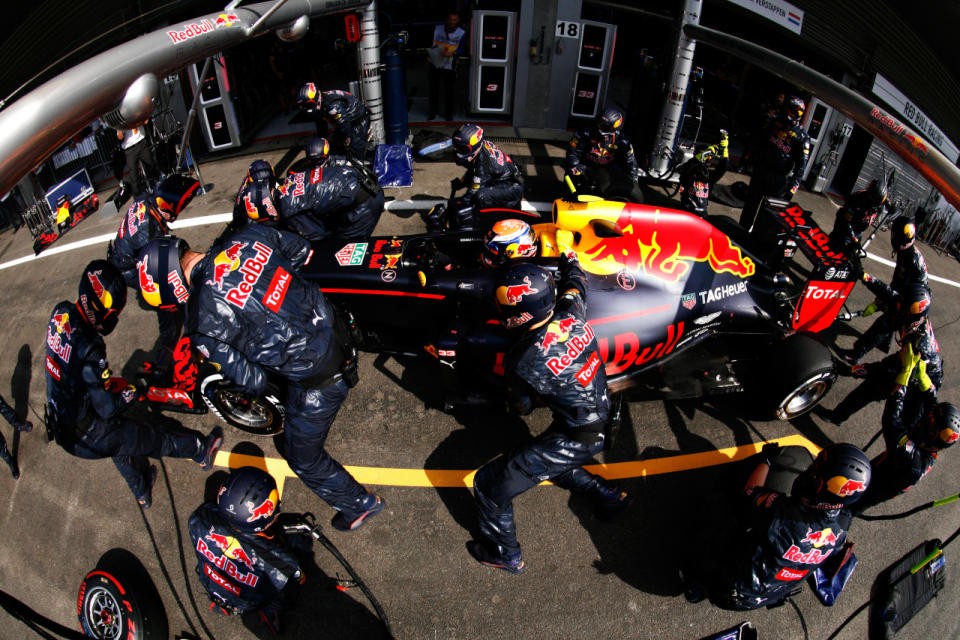
The scenario is a familiar one to F1 fans: a driver is stuck behind another car, struggling to find downforce in the turbulent air and unable to pass even though he is faster than the driver in front.
The team does a pile of calculations and decides the best chance of an overtake is by pulling into the pits.
In comes the driver, up goes the car and, two seconds later, the whole thing is done; four new tyres and, unless the other car enjoys a flawless pitstop too, a race place gained.
Two seconds: it can take longer to remove the dust cap on one wheel of your family hatchback than it takes an F1 pit crew to swap four entire wheels.
The story of how Formula 1 pitstops became so ridiculously rapid is a story of small innovations which each saved tenths of seconds and cumulatively made pitstops so fast that they became spectacles in themselves and, indeed, a race in themselves.
Here are just a few of these innovations…
A stroke of genius
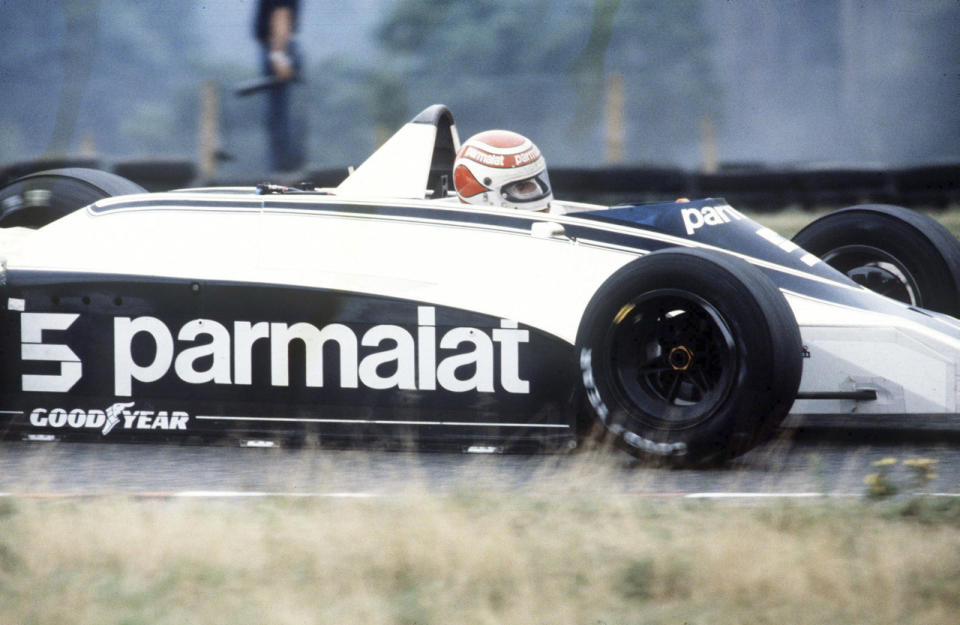
While planned pit changes were a feature of F1 in its early days, they died out during the 1950s and took place only when the car had a puncture or some other mechanical issue.
No one saw the potential of the pit stop until the early 1980s, when designer Gordon Murray got his calculator out and realised that, if you started a grand prix with half as much fuel as everyone else, you could (potentially) pull out enough of a lead to allow you to refuel midway through the race – and still remain in the lead.
Murray worked for the Brabham team, led by Bernie Ecclestone, and their BMW-powered car was a thirsty beast. But this was less of a problem if you planned to stop halfway to refuel and, as an added bonus, you could put on fresh tyres as well.
Their early experiments with planned pitstops were ruined by the Brabham BT49’s appalling reliability and other dollops of bad luck. But, at the 1982 Austrian Grand Prix, Italian driver Riccardo Patrese started with half-fuel, pitted mid-race and then, with fresh tyres and enough fuel to get him to the end, rejoined at the front of the race.
His pitstop had taken all of 14 seconds which, in 1982, was remarkable.
Not that other teams paid much heed – Patrese’s engine blew up, as usual, and so the new pitstop tactic didn’t help deliver a headline-grabbing result.
Williams toyed with the approach but it would be the following year before ‘pitstop cars’ with half-size fuel tanks would become familiar.
The half-tank approach brought other benefits too – lower weight and a faster car, as well as a lower centre of gravity.
In the book Performance At The Limit, Murray says: ‘It’s just pure mathematics; you just draw a graph of the race – you draw the car’s weight, the centre of gravity and the benefit per lap as a curve – and then you take a chunk (a negative curve) out of the middle bit where you lose, say, 26 seconds slowing down and coming into the pits and refuelling.
‘And, if the total equation’s better, then you do it.’
Cold calculations, warm tyres
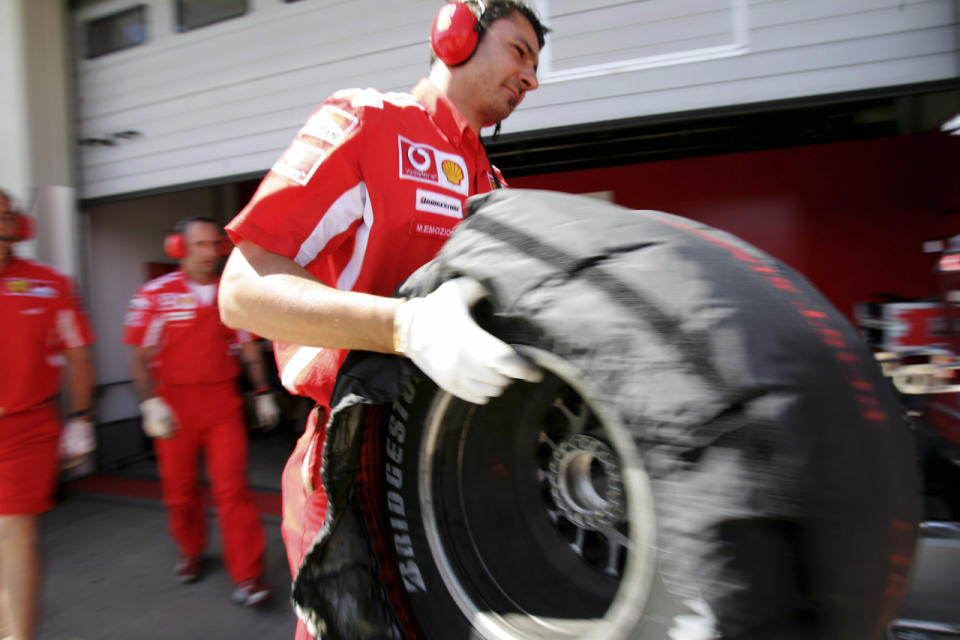
Another pitstop breakthrough happened in tandem with half-fuel cars. F1 cars have always suffered when their tyres are not at the correct operating temperature – it’s a huge problem in modern Formula 1 but it was also a headache when Murray adopted his planned pitstop approach.
Now, electric blankets cover the tyres and keep them at 80-100C but they weren’t an option in the early 1980s.
As far back as the 1974 Canadian Grand Prix, McLaren heated their pit to help warm tyres and then wrapped them in blankets and quilts requisitioned from team members’ beds so they wouldn’t cool too quickly when they were taken to the grid.
But Gordon Murray and his team had a better idea. They built a wooden oven, powered by gas heaters. Into this rudimentary incubator they popped four spare wheels and tyres and, at the last moment, as their Brabham was being refuelled, retrieved their freshly warmed rubber and slammed it on to the car.
It may have been closer to a pizza oven than a tyre blanket but this idea changed the way teams treated their tyres to this very day.
Laser-like focus

When you have a team of 20 or more primed to pounce on a car in the pits, there’s not much room for manoeuvre.
So drivers have to stop accurately on clearly defined marks in the pit.
Over the years, different methods have been employed to help them, including the now ubiquitous boards that pit crew wear on their forearms to show just where the front wheels should stop.
In 2010, Red Bull realised that, if a mechanic is going to show a driver exactly where to stop, it’s rather important that the mechanic himself knows where the ideal point is.
So they used green lasers to shine down and mark the precise point where a mechanic should signal the driver to halt his car.
When you think about it, it’s quite a convoluted approach – someone marks the ideal stopping point, then a laser is calibrated to shine down, then a mechanic holds a board under the laser to help the driver then … well, every so often, a few tenths of a second would be saved because the driver stopped where he was supposed to.
Strategists: The gods of modern F1
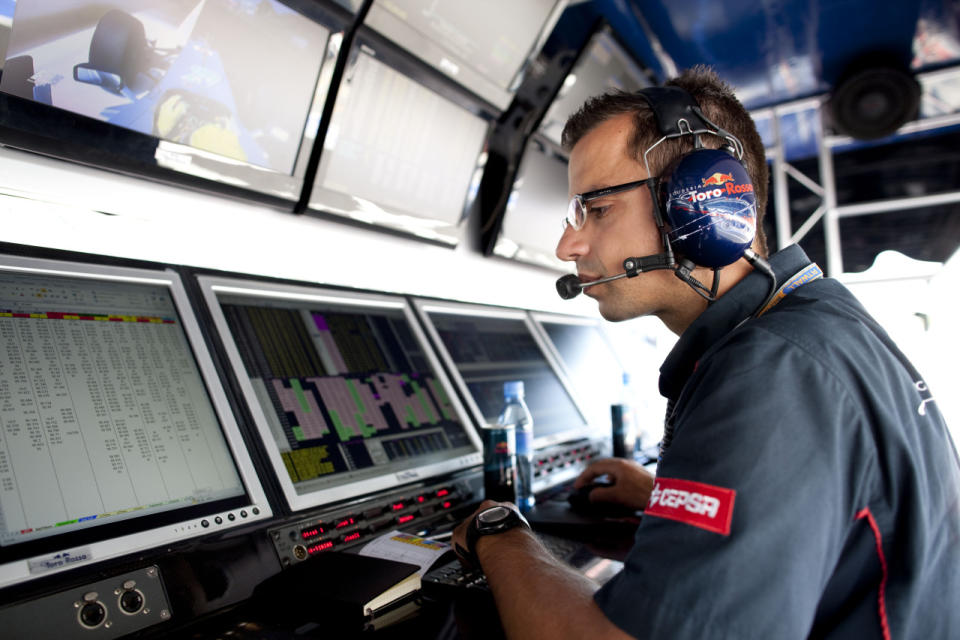
With (very roughly) a mile of wiring and approximately 150 sensors, F1 cars are capable of capturing an immense amount of data about how they are performing.
Couple that with the information that teams gather about competitors, weather, probability of safety cars, tyre degradation and so much more, and you have … well, you have too much information.
Someone needs to make sense of this to help teams decide when is the best time to call a car into the pits – whether to pit now, or stay out for a couple of extra laps, on old tyres, and rejoin the race in a more advantageous position.
Enter the strategists. These engineers and probability specialists have access to 1.5billion data samples every race.
Yes, 1.5billion, and that’s just from their cars. How does one even begin to harness this information?
Teams start by using powerful computers, the best of which can handle 40trillion calculations every second. That’s roughly the number of individual cells in your body (as if that makes the figure any easier to grasp).
These computers run simulations, before and during a race, which try to capture the most likely outcomes of the ever-changing circumstances of a grand prix.
The programmes are not dissimilar to those used by bankers trying to second-guess markets.
A popular type is known as the ‘Monte Carlo Simulation’, which tries to predict outcomes which are at the mercy of random interventions (which could be rain falling, punctures, a driver’s strengths, temperature changes, animals running on to a track and suchlike).
One of the most notable breakthroughs for strategists came in 1994, in the early days of Michael Schumacher’s career. Refuelling was reintroduced to F1 that season, and Schumacher’s Benneton strategists realised that, by removing a filter from refuelling rigs, they could cut a second out of an eight-second pitstop. In a race with a single stop, this might be enough to ‘undercut’ a competitor and overtake them in the pits, rather than on track. In a race with two or three stops, it was a huge advantage.
Nowadays, teams have strategists at the races and also at their head offices, crunching data, seeking out tiny advantages and suggesting when it might be appropriate to take a risk.
Drivers may get the glory, designers may get the kudos but, without strategists, none of them will get to taste the winner’s champagne.
Nuts to you all
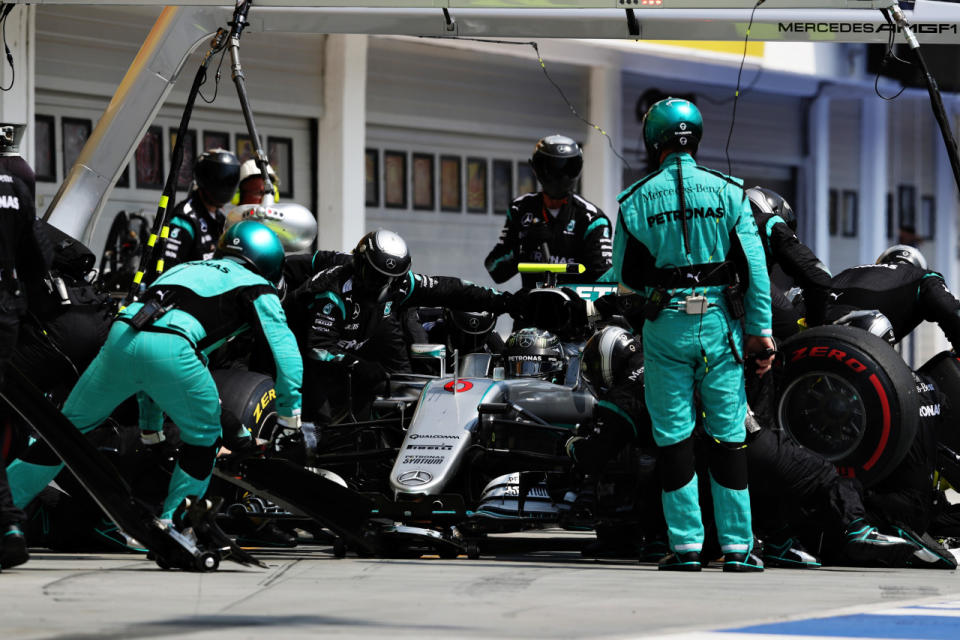
Small things can make a big difference. F1 cars have had wheels held on by five nuts, by single nuts, by nuts that were freed with a blow from a hammer.
A nut that is locked by three turns is quicker to replace than one locked by six turns, which is one reason why F1 pitstops are so blisteringly quick these days.
F1 hasn’t been afraid to learn from other racing series such as DTM touring cars.
Once, wheelnuts would occasionally fly lose in the pits or work their way off the car with unwelcome results.
But for several years now, wheelnuts have been part of the wheel itself, sitting loosely and automatically locating themselves as the wheel is pushed on to the axle.
Held in with circlips or O rings, they are also fitted with a back-up locking mechanism.
They are complicated, by nut standards, and expensive. And, this being Formula 1, they are usually used just once.
Go, go,go!
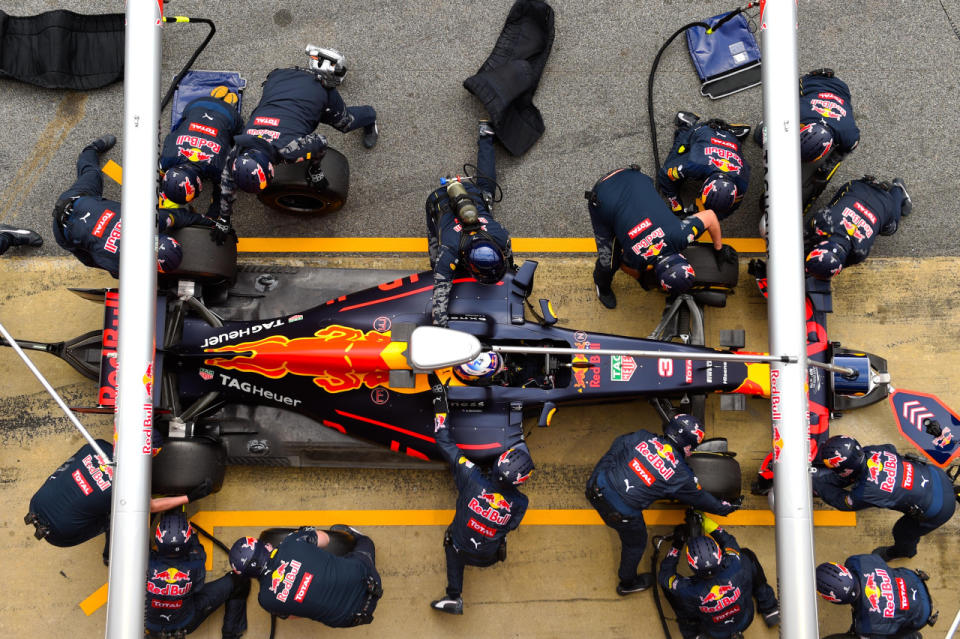
There are many other innovations that have speeded pitstops – swivel jacks, more powerful pneumatic tools, signalling developments.
But, for a particularly significant one, we return to Gordon Murray in the early 80s.
He realised the importance of a well-drilled pit crew.
Murray studied videos of crews in action to work out the quickest way to change a wheel.
In an ideal scenario, he could fuel a car in three-and-a-half seconds, and so wheels were the thing really holding Brabham up in the pits.
DayGlo paint was used to mark out key positions in the pit, special wheel nuts were developed, and the Brabham pit team was put through its paces again and again.
In Murray’s own words: ‘We trained the people like crazy.’
Training and practice have remained key to pitstop success, and are key to the pit times we are now seeing from the likes of Red Bull and Williams when four wheels can be changed in 1.9seconds.
Even to a seasoned F1 fan, such figures seem impossible. But that’s what happens when innovative people find innovative ways around common challenges.

 Yahoo Sport
Yahoo Sport 





































